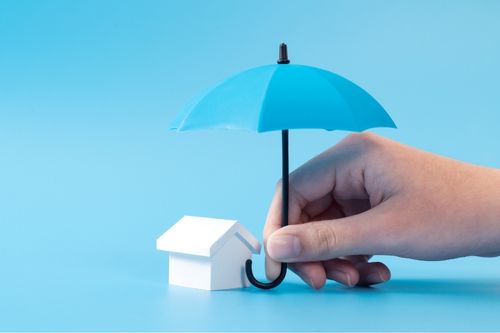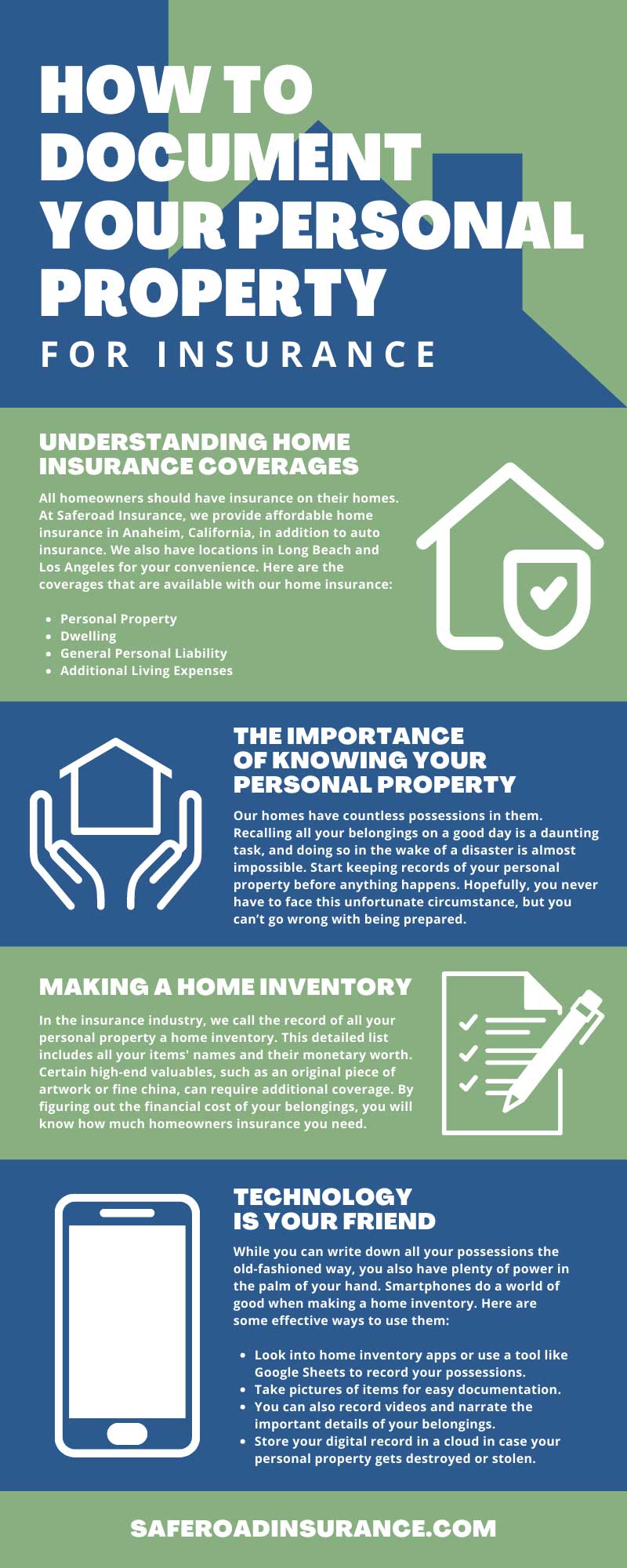
Even though we like to think of our homes as safe places where nothing can go wrong, we still need safeguards like personal property insurance. We take certain precautions to protect ourselves, like installing a doorbell camera or an alarm for heightened security. Whether we like it or not, our homes are sometimes susceptible to the unpredictable. Do you know what you would do if you lost everything in a natural disaster?
Homeowners insurance protects you by fighting against unpredictable factors in life. This safeguard has the potential to keep the belongings in your home safe. However, you are still responsible for knowing what those items are. You will get the most out of your policy when you learn how to document your personal property for insurance.
Understanding Home Insurance Coverages
All homeowners should have insurance on their homes, but what does home insurance cover? At Saferoad Insurance, we provide affordable home insurance in Anaheim, California, in addition to auto insurance. We also have locations in Long Beach and Los Angeles for your convenience. Here are the coverages that are available with our home insurance:
- Personal Property
- Dwelling
- General Personal Liability
- Additional Living Expenses
Let’s break down these terms to provide more clarity on what our policies offer.
Personal Property
When you buy a homeowner insurance policy, you’re buying personal property insurance. This term refers to the possessions that reside inside your home. Your coverage may vary depending on what kind of policy you have, but most include protection against fire and theft. Residents of California should consider investing in plans that also include earthquake protection. Documenting your personal property is a crucial part of protecting it, which we will discuss later.
Dwelling
A dwelling is what we say when referring to your overall home. This area also includes garages and other buildings attached to the residence. However, buildings not connected to the house on your property require additional coverage, such as detached garages and sheds. We generally cover damage from inclement weather and theft.
Personal General Liability
This coverage keeps your family and pets safe in a few scenarios involving other people getting injured by accident. There are some surprising things that homeowner’s insurance covers including, property damage created by pets. This coverage also helps in certain accidents outside of the home. Examples of this are:
- If a visitor slipped and fell in your kitchen, general personal liability would help take care of their hospital expenses.
- Your dog gets out and digs holes all over your neighbor’s yard. This coverage would help cover the landscaping bills.
Additional Living Expenses
When disaster strikes and makes your home unsafe, additional living expenses help take care of your financial needs. This coverage goes towards daily living costs you incur while house repairs take place, which typically include hotel and food bills.
With understanding the standard policies that protect your home, we will now go over how to document your personal property for insurance in the most effective ways.
The Importance of Knowing Your Personal Property
Our homes have countless possessions in them. Recalling all your belongings on a good day is a daunting task, and doing so in the wake of a disaster is almost impossible. This is why personal property documentation is vital. Start keeping records of your personal property before anything happens. Hopefully, you never have to face this unfortunate circumstance, but you can’t go wrong with being prepared.
If you’re unprepared after a catastrophic event, you risk not getting compensated in full for your valuables. Home insurance can still help, though we want you to make the most of your policy. The best way to do this is by creating a home inventory.
Making a Home Inventory
In the insurance industry, we call the record of all your personal property a home inventory. This detailed list includes all your items’ names and their monetary worth. Certain high-end valuables, such as an original piece of artwork or fine China, can require additional coverage and affect the cost of your policy. By figuring out the financial cost of your belongings, you will know how much homeowner’s insurance you need.
Wondering just where to start is natural. Thinking of everything feels overwhelming, but we have some tips to help simplify the process.
Start Small
The first tactic we like to employ is starting small. Don’t think of every room in your house but just one for the time being. From there, you can break down the areas of the room into smaller sections.
Let’s say you want to begin with your master bedroom. You might divide and conquer the room in the following ways:
- Go through the closet.
- Take note of clothing and items stored on shelves.
- Inspect personal possessions inside the bedside table.
- Take inventory of other belongings in drawers, especially if you have a dresser.
- Calculate the value of bigger items, like your mattress and other furniture in the bedroom.
- Organize your possessions by type.
When you start small, you can tackle each area of a room one at a time. This technique works well for clearing out items you no longer need and can sell or donate, making the process extra useful as it helps you maximize the space in your home.
We recommend you don’t rush these steps to avoid feeling burned out. A significant other or family member can assist with the home inventory project to make it more enjoyable. After all, taking note of a special souvenir has the potential to let you both recall memories of a fun vacation. Little by little, cataloging items in your house will allow you to make a detailed home inventory in an emergency.
Technology Is Your Friend
While you can write down all your possessions the old-fashioned way, you also have plenty of power in the palm of your hand. Smartphones do a world of good when making a home inventory. Here are some effective ways to use them:
- Look into home inventory apps or use a tool like Google Sheets to record your possessions.
- Take pictures of items for easy documentation.
- You can also record videos and narrate the important details of your belongings.
- Store your digital record in a cloud in case your personal property gets destroyed or stolen.
Using technology makes keeping track of your home inventory easier than ever. We recommend checking your personal property data annually to ensure the information stays relevant.
You now have a comprehensive understanding of what goes into homeowners insurance. Do your best to protect the whole family by documenting what matters most to you, so you’ll be ready if disaster strikes your home. Learn more about personal property insurance and documentation by exploring our blogs. Contact us today to get a quote for your home.

